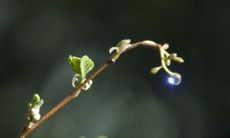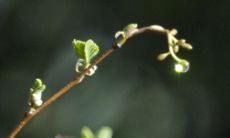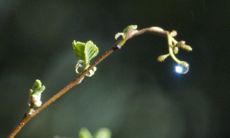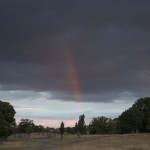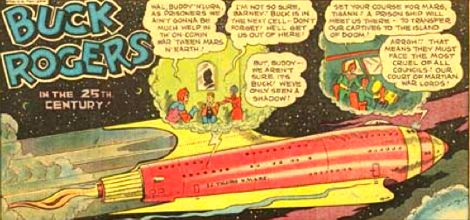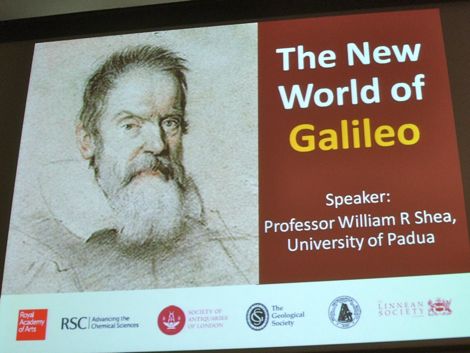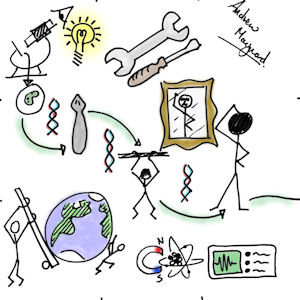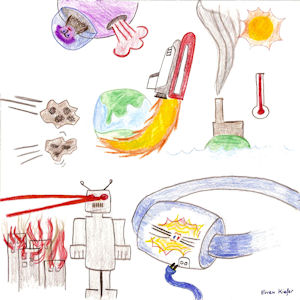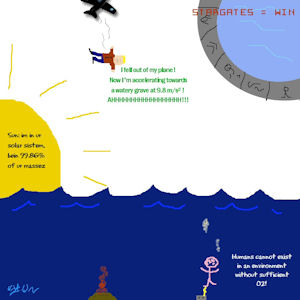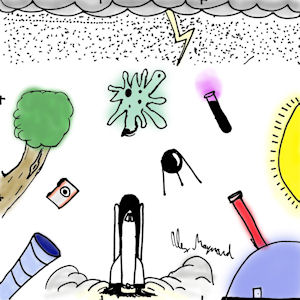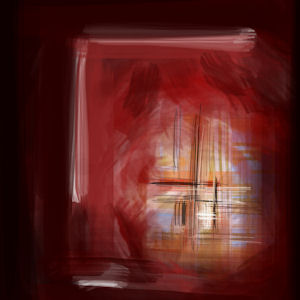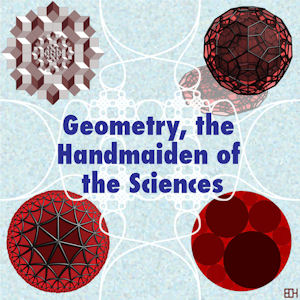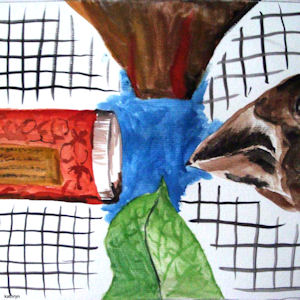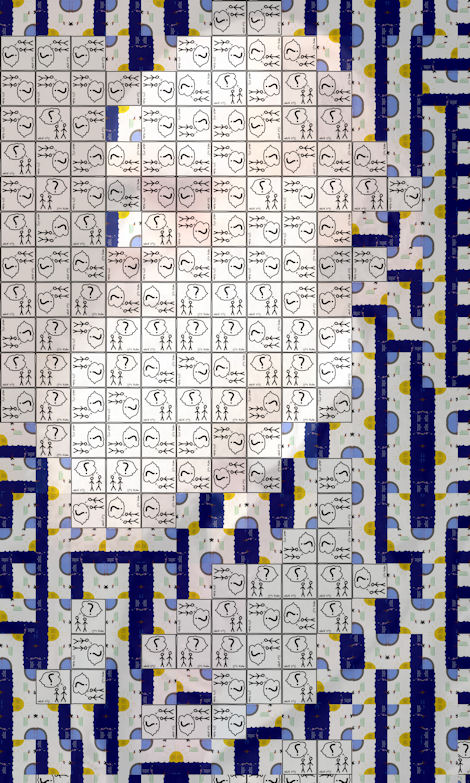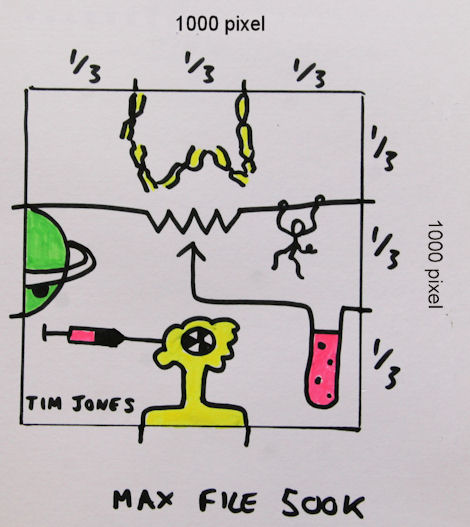It’s turning into quite an artsy fortnight. On Thursday, I went to see Getty CEO Jim Wood interviewed at Caltech, then a visit with dinner at the Getty Center itself on Saturday night, before on Monday taking my chances with the holiday crowds at Los Angeles County Museum of Art (LACMA). Between times I’ve been viewing some wonderful examples of Arts & Crafts era houses in Pasadena, and learning about the origins of Californian en plein air outdoor painting. A few notes on the Caltech event…..
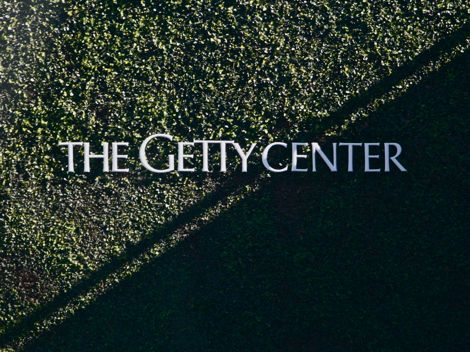
‘Science and Art’ featured J.Paul Getty Trust President and CEO Jim Wood talking with broadcaster Madeleine Brand.
Despite the wide-open title, the conversation focused on the Getty’s expertise in artifact conservation, and an upcoming series of region-wide exhibitions intended to show how post-WWII Californian art was influenced by the science and technology of the period.
Wood began by describing the full extent of the Getty’s capabilities beyond the public face of the Museum, and how its scientists have developed conservation techniques that are deployed on conservation projects around the world. These range from the restoration of flood-damaged panels in Florence to the recovery of poorly preserved mosaics in Damascus.
The upcoming exhibition series will feature artists from Los Angeles, and cover the 1945-1980 period of rapid industrial development and space exploration. Californian artists in particular stayed close to technological developments at this time, and incorporated emerging new materials and techniques into their art. The period is coincident with the Cold War, so it will be interesting to watch for any cultural references in that direction (I’m thinking of the type of arts exhibits from the USA featured in the Victoria & Albert Museum’s Cold War Modern exhibition last year).
The Q&A kicked off refreshingly backwards with Jim Wood suggesting it’s important to understand the differences between art and science. He takes the view that science deals with progress – it moves towards a goal; but art – while evolving, doesn’t do that; it’s less about facts than ideas. All in all though, despite Wood’s best efforts, these forays into more philosophical territory didn’t really get picked up on by the interviewer or the audience; something of a missed opportunity I felt.
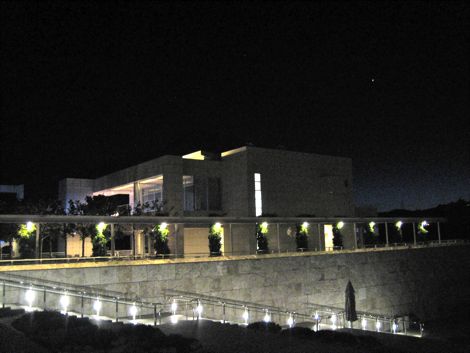
There was an interesting question to Wood on the role of art as a tool to explain difficult scientific concepts; had such art been produced, and should it be preserved? Making a distinction between illustrative and creative art, Wood suggested scientifically illustrative works were likely to be valued; but more for their documentary than artistic qualities. For me, the role of illustrative art is undeniable – look at the depictions of cosmological concepts in popular physics books. The role for creative art in science communication is more ambiguous. It can tell us about prevailing cultural attitudes towards science and technology – back to the Cold War again, consider those swirling atoms and mushroom cloud depictions of atomic power. But it’s less obvious – to me at least – how an abstract artistic aesthetic might translate into, or inform, science.
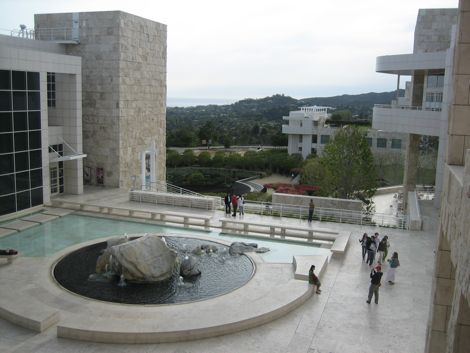
Wood was asked how we decide when it is right to return an artifact fully to it’s original state – as the conservator’s toolkit gets ever more impressive? It seems there are some difficult calls, but it’s more usual to conserve than restore.
That brought to mind a whole area of science-art interaction that the evening hadn’t touched upon: the use of technology for artifact simulation and display, whereby an original piece is presented next to a simulation of how the item would have originally appeared. I’m thinking here of Roman and Greek statues in their original livery, the brightly painted interiors of Catholic cathedrals, and projection techniques that bring faded tapestries – however temporarily – back to life. I digress; but for more on the topic, here’s a nice piece on statuary, ‘Gods in Color’, from the Boston Globe.
Anyway, that was a very brief update on my brush with science and art at Caltech and the Getty.
Incidentally, one important feature of the Getty Center that Wood didn’t mention is its restaurant, commendable as much for its location as the food. Perched high overlooking the Los Angeles basin towards the ocean, the views are an inspiration to artist and scientist alike.
